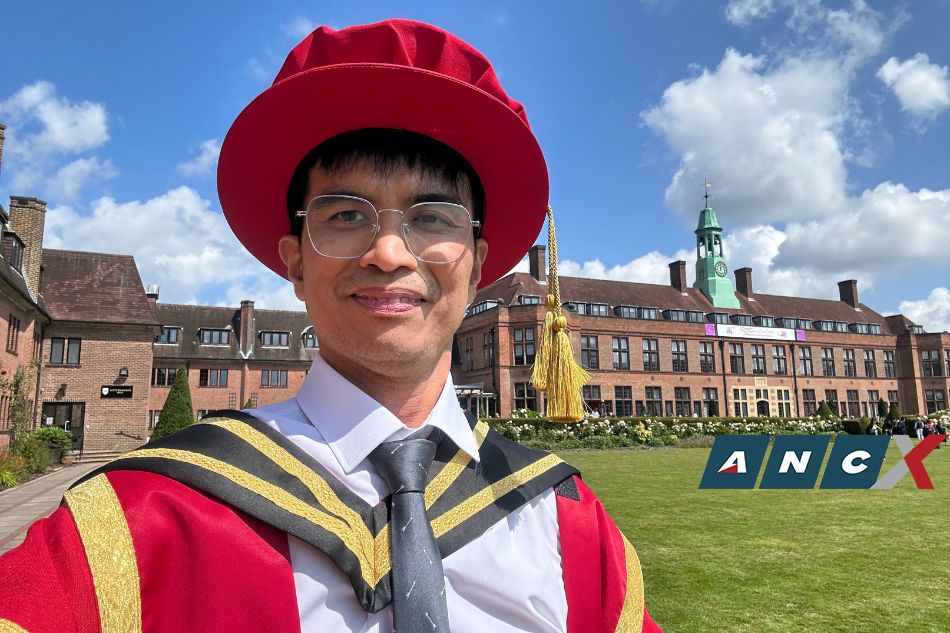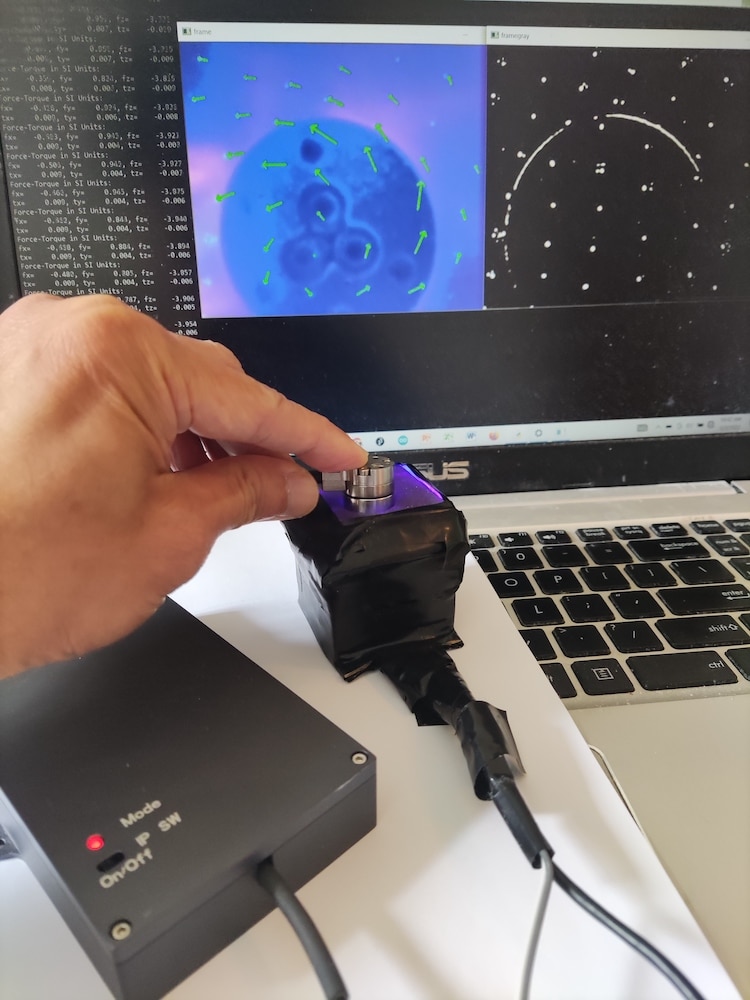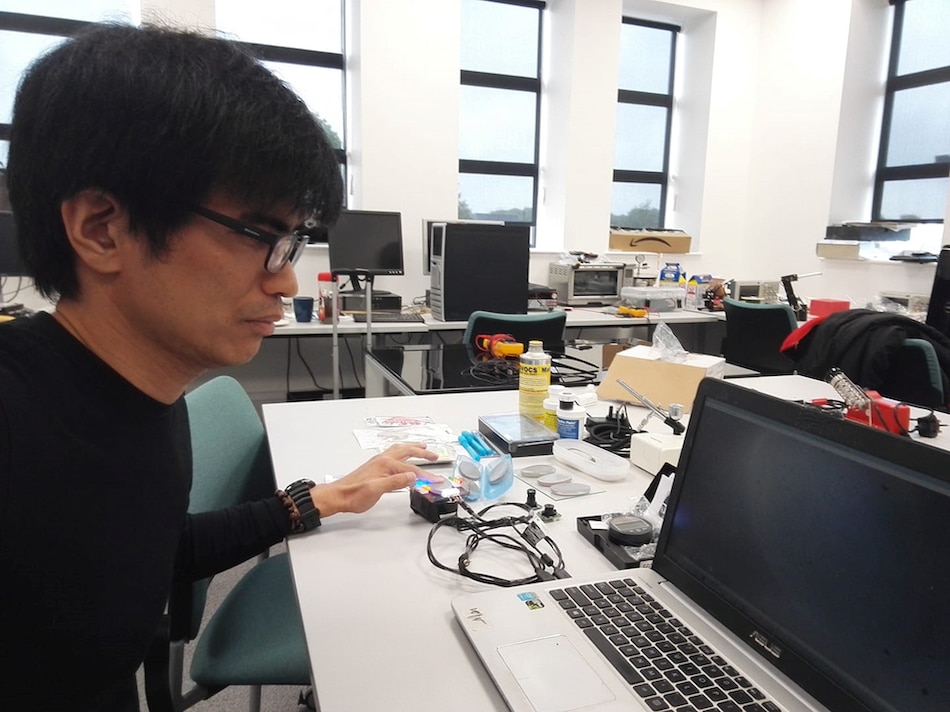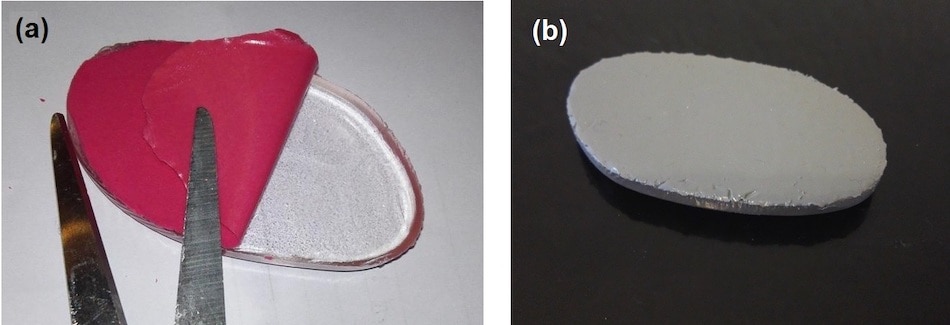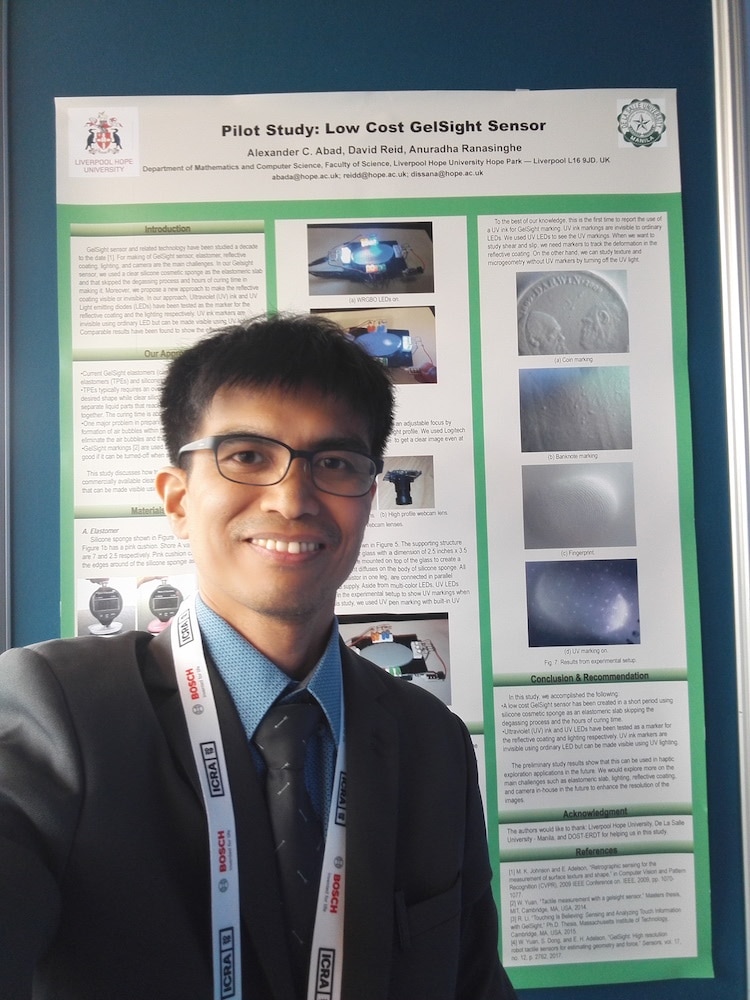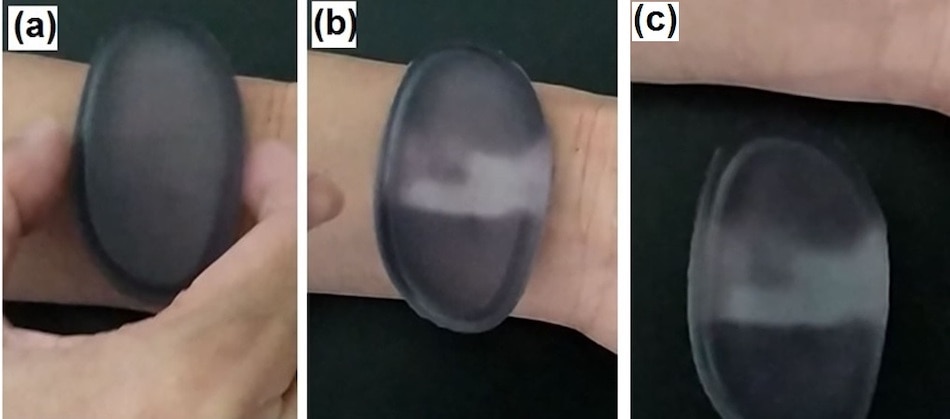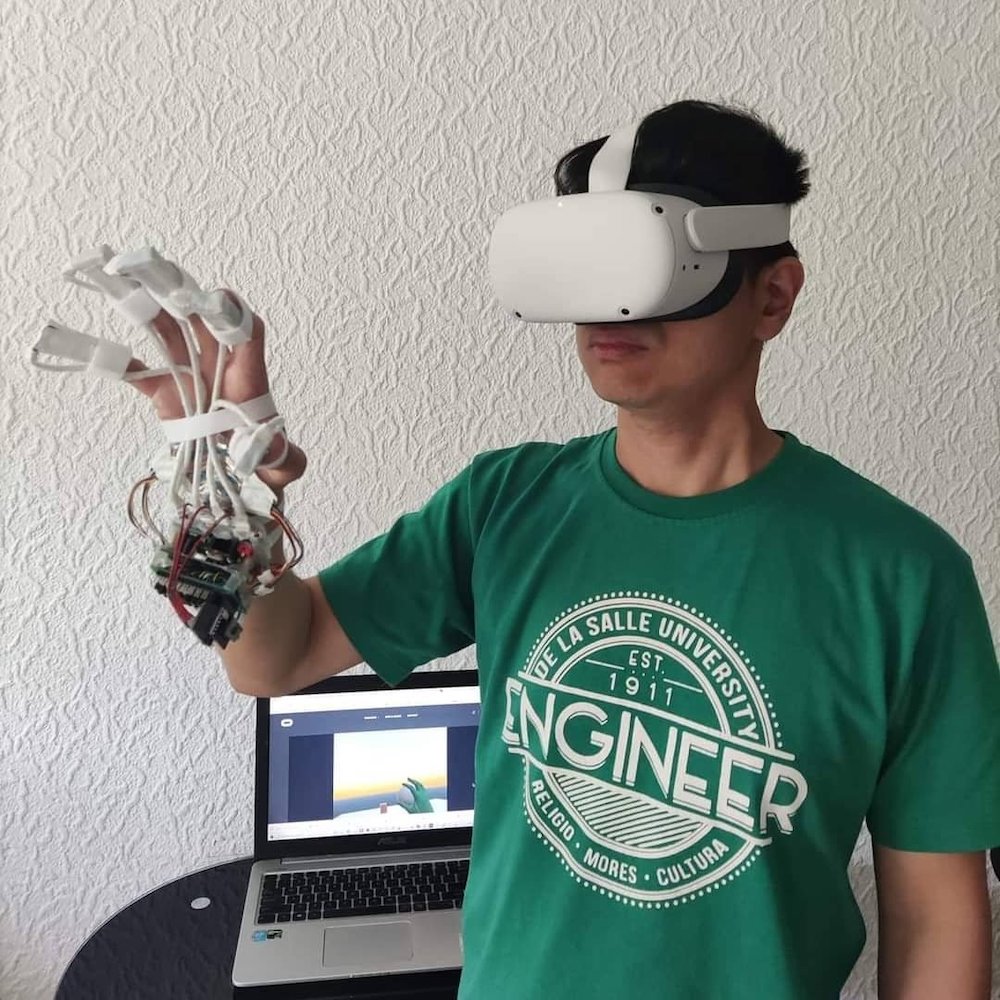For generations, scientists and writers have imagined a future where robots coexist with humans and make our lives easier by performing a whole array of tasks. "The Jetsons" come to mind and the sci-fi movie “Bicentennial Man.” But for all the technological milestones on robotics, there’s an aspect science have yet to perfect, says Dr. Alexander Abad, an assistant professor in the electronics and computer engineering department at De La Salle University—the thing that will make robots sense and feel like humans do.
Which makes Abad’s invention, the HaptiTemp sensor, a noteworthy development in the field of robotics research. What the assistant professor has come up with is a sensor, as small as a ring box, that can measure force, vibration, and temperature, as well as recognize tactile images. “The human skin can recognize hot or cold temperature, rough or smooth surface, moving objects, and detect the amount of force exerted. Yung sensor ko lahat yun magagawa niya. It’s the closest thing to a human skin,” Abad tells ANCX.
For his thesis entitled “Fine-grained Haptics: Sensing and Actuating Haptic Primary Colours (Force, Vibration, and Temperature),” the Filipino inventor, who completed his PhD in Computer Science and Informatics at Liverpool Hope University, was recognized at the prestigious Queen Mary UK Best PhD in Robotics Award. His research won second place in the robotics competition, which was participated in by PhD students from different UK universities. The submitted works were reviewed by international experts.
The 43-year-old engineer also recently presented his research at the 2023 TAROS (Towards Autonomous Robotic Systems) Conference, the longest running UK-hosted international conference on robotics and autonomous systems.
Abad arrived in the UK in February 2019 to study at the Liverpool Hope University—through support from the Philippines’ Department of Science and Technology - Engineering Research and Development for Technology (DOST-ERDT) Foreign PhD scholarship and the Mme. Maillefer Study Program of DLSU- Manila.
Since he hasn’t at that time decided on what research to embark on, his PhD Supervisor, Dr. Anuradha Ranasinghe, encouraged him to delve into the rapidly evolving field of tactile robotics, which focuses on developing robots with human-like capabilities. Abad was introduced to a 2009 invention by scientists from Massachusetts Institute of Technology (MIT) called GelSight, a device made of a slab of clear elastomer which is “used for measuring high-resolution surface topography.”
“Ang unang application ng sensor na ito ay sa metrology, pangsukat ng mga texture,” offers Abad. “Kunwari sa piso, pwede mong sukatin ang embossed image ni Rizal. Puwede mong masukat ang thickness ng hairstrand.” The next iteration of the device had permanent markers and can be used for tactile sensing or calculating movement.
On his first two weeks at the university, Abad tried to replicate the GelSight. To do that, he needed a vacuum pump for degassing so that the gel won’t have bubbles during molding. He didn’t have a vacuum pump but the resourceful Pinoy found a low-cost alternative in a cosmetic store—a 1£ clear silicone cosmetic sponge. He took off the layer of the colored sponge and used the clear silicone inside it as a basic component for the sensor. He painted one side, put a camera underneath, and voila—it worked like a GelSight sensor.
The sensor had two iterations, one with the markers and one without the markers. “If I could combine the two versions and create one with switchable markers—show the markers or make them invisible—it would be a huge improvement to the technology.”
He discovered what to do while paying his purchases in a department store. “I gave a 50£ bill and the cashier checked the money under a UV light,” he recalls. That’s when he realized there are markings on the money that can only be seen under a UV light. It was, well, a UV lightbulb moment for him. “Ang ginawa ko, gamit ang murang UV pen, nilagyan ko ng markings ang clear silicone at ginamitan ko ng UV light ang sensor ko. That way, pwede ko na ma-switch on and off ang UV markers.”
His adviser urged Abad to publish a paper about the results of his study and submit it to the International Conference on Robotics and Automation (ICRA). “Di ko alam na ganoon pala kalaki ang impact ng research ko sa robotics community,” he tells ANCX. He presented his research in a major robotics conference in Canada. There, he met the inventor of the GelSight, Edward Adelson.
The following year, the Manaoag, Pangasinan native published his full research paper on tactile recognition and sensing using the sensor he developed. Next, he improved on the technology again, adding features that could measure force and vibration. “Madalas force lang ang name-measure. Ngayon pati vibration name-measure ko na,” Abad explains. “Kaya kong ma-sense ang pulse rate ng tao. Ganoon siya ka-sensitive.”
The only thing it could not measure was temperature. Until something came to him—a P55 magic mug which changes color when filled with hot liquid. He found out that the effect is created using thermochromic ink. He bought the pigment and mixed it with paint that he used to shade one side of the clear gel. With this new development, his sensor can also measure temperature.
“Ang pinakamaganda pa dito, sobrang bilis ng reflex response nitong sensor sa mainit na temperature. Kung sa tao, ito ay half second (500 milliseconds), itong sensor ko can detect heat within 643 milliseconds, it will change color. Halos kasingbilis na siya ng reflex response ng tao,” Abad says. “Kung gagamitin ang sensor na ito sa robot, pwedeng lumayo ang robot sa init kaagad kapag ito ay napaso, parang tao.”
Abad’s invention became a unified haptic sensor that could be used as a force, vibration, and temperature sensor, and could also capture high-resolution tactile images. This became the HaptiTemp.
The Filipino engineer believes this technology could have a wide range of use not only in robotics but in the field of medicine and agriculture. “When attached to a robot’s finger, it is able to sense your pulse. And it can even differentiate between rough and smooth surfaces,” he told Liverpool Echo in an interview. “The overall concept is to enable a robot to feel and sense like a human would, which gives it many advantages for medical work.”
The technology could also be used to develop robot arms with better grasping capabilities. Right now, when the object a robotic arm touches is smooth, there’s a tendency for it to slide when gripped. With the sensor that Abad developed, a robot’s gripping force can be increased or decreased. “Pagdating ng araw, ang mga robot pwede nang mamitas ng bunga ng prutas o gulay,” Abad tells us, smiling. “Pwede na din silang maghalungkat sa drawer kahit hindi nila nakikita ang laman ng drawer.”
His dream is for the technology to be used in biomedicine and a range of medical procedures, as he’s also connected with DLSU’s Institute of Biomedical Engineering and Health Technologies (DLSU-IBEHT). “Balang araw, pwede siyang magamit sa teleoperation at endoscopic procedures,” Abad adds.
The Filipino inventor is happy that his work could pave the way for new and innovative research. “My goal is to share this with the public so that the technology is able to develop at a faster rate, therefore benefitting us all,” Abad said in a university interview. “I was able to find a material readily available in the market, used by many people. And it’s so effective. Hopefully this will encourage more researchers to do their own work in this area.”
Photos courtesy of Dr. Alexander Abad


